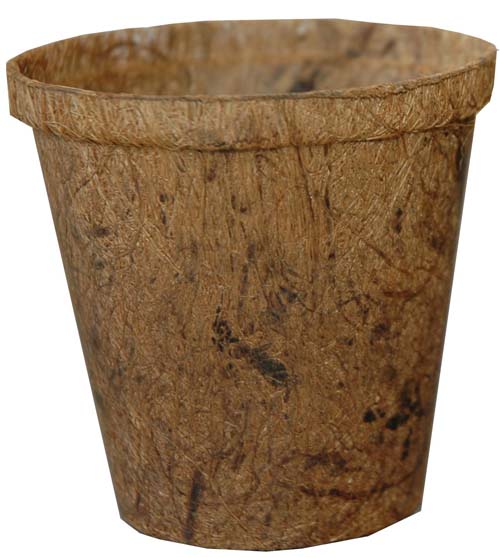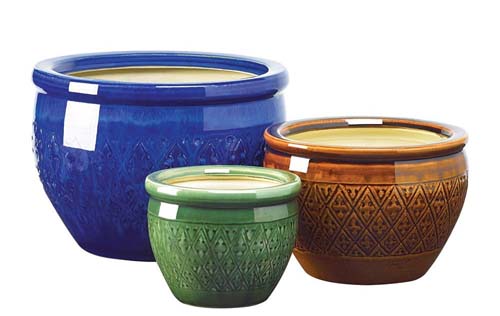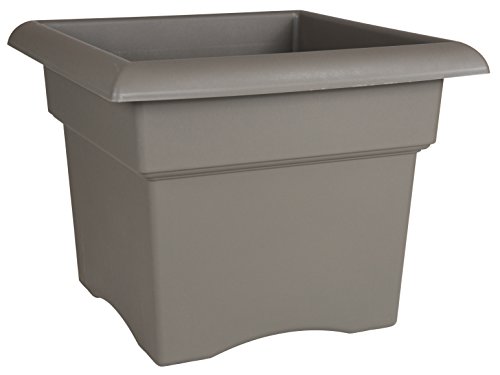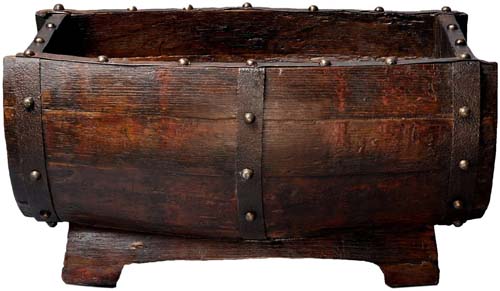Here is a breakdown of the different materials planters can be made from in order to make it easier for you to make the best choice for your needs. Where you want to keep the potted plant, your climate, aesthetic value, and ease of maintenance and cost are all factors you need to consider before you make a decision.
Pressed Paper
Pressed paper containers are a great choice when dealing with vegetables. These containers breathe well, promoting healthy root growth and improving aeration, as well as insulating the roots from temperature changes that might otherwise harm or stress your plants. These planters are biodegradable, which is great for the environment but means that you will need to replace them every single year. Since the cost of these is low, usually around two dollars per pot, the pots are still an economically sound choice. Some pressed paper pots are now being lined with a wax coating, which gives them a slightly longer life span. Other types are made from grain husks and various binding agents rather than coconut husks. These pots are inexpensive and can be found in a wide variety of colors and shapes, up to around a foot in diameter.
Ceramic
Ceramic containers, or stoneware, are made from finely textured, light-colored clay and then glazed. These containers are fired at a high kiln temperature, which reduces the pot’s porosity and vulnerability to the elements. However, if a ceramic pot is left out in the cold weather it can still crack. The down side to this durability is that the potss are quite heavy, although this factor makes them a good choice for plants that will grow to be top heavy. Ceramic planters also tend to be expensive, but are available in a wide variety of color glazes and designs. They come in a wide variety of shapes and sizes, with large bowls being among the most common.
Terra Cotta
Terra cotta is a type of clay that is commonly used in making pots and planters of various sizes and shapes. Terra cotta pots can be as small as two inches in diameter or height, and as large as the creator’s imagination. The shapes and sizes of containers from this material are seemingly endless, so they are quite versatile. It is typically a warm reddish brown color and offers an earthy appeal to gardeners. Terra cotta also tends to be readily available and affordable, which makes it a popular choice among gardeners for indoor and outdoor use. Madison Terra Cotta Clay Planter, available from Gardener’s Supply Two aspects of terra cotta that you need to be aware of is that it is more fragile than some of the other planting options, and that terra cotta is generally sold unglazed and is therefore permeable. This means that the pot can lose moisture, and soak in moisture from the outside. If you find that you cannot keep up with the water needs of a plant that is otherwise thriving in terra cotta container, then I suggest lining the interior of the pot with a graze or some plastic to limit the amount of water that escapes through the pot. Remember to leave some drainage holes in the plastic if you do chose to line a pot, or you will encounter a new set of water related woes. If you live in an area with very cold winters, it is important to store any terra cotta pots upside-down and indoors to prevent early destruction from the elements.
Fiberglass and Resin
Fiberglass planters are created from a blend of resin and glass fibers. These pots tend to be molded to look like terra cotta or stone pots. Actually, some manufacturers have added some limestone of clay to the resin blend to create a better texture. While this choice might not be the most ecologically friendly, it does have quite a few advantages. Fiberglass planters are lightweight, durable, and look very much like the materials they are molded to imitate. These containers do not need any special storage; they can handle any expected weather without having to be taken indoors.
Plastic
Plastic containers can also be made to look like other materials, but is less realistic and durable that the fiberglass planters. Most plants that you purchase in a store or at a nursery will go home with you in a plastic container; this is because it is the cheapest container for commercial growers to use. Fiskars 14-Inch Veranda Square Planter Box, Color Cement Thicker versions of plastic planters can be made to look like stoneware or terra cotta pots, but they do not have the heft of the real thing. Plastic planters can come in an endless number of sizes and shapes.
Wood
Wooden planters can look great in just about any outdoor or patio setting. These containers tend to be square or rectangle, although there are some curved containers available as well. Antique Revival Wooden Half-Barrel Planter available from Wayfair Wood is not likely to crack in cold weather, and is slow to dry out. The only real danger with wood containers is rot; therefore, I suggest lining a wooden planter with plastic to prevent this problem. Just remember to leave some holes in the plastic for drainage.
Metal
Metal containers are extremely durable, and in the case of cast iron, extremely heavy. Metals such as aluminum can offer gardeners the durability of metal with a lighter weight, making the planting and moving of pots much more practical. Better Metal Square Planter, available from Gardener’s Supply Company Aluminum does not rust, does not need painting and costs less than some other metal options. Other metal choices include copper-coated stainless steel, zinc, lead, and copper.
Concrete
Concrete planters can look great, especially once they have aged a little. While concrete is the practical choice for large plants that might need the ballast support against the wind because of its sheer weight, that weight also makes the planter difficult to move. Therefore, if you plan to use concrete containers for anything, make sure you know where you want it and do not plan to move it. On the other hand, no one will ever steal it or play a prank and move it. Concrete is a reliable insulator and will protect the roots even during times of large temperature changes. What qualities do you look for in a garden planter? Let us know in the comments below! And don’t miss our guide to the best containers for succulents.





